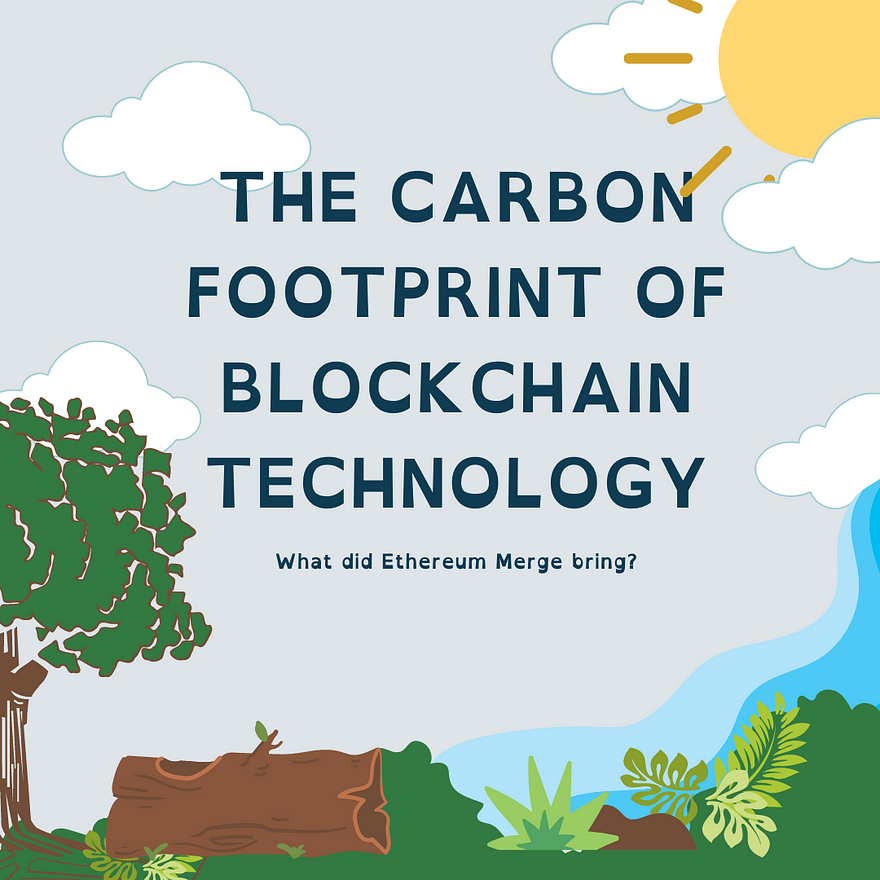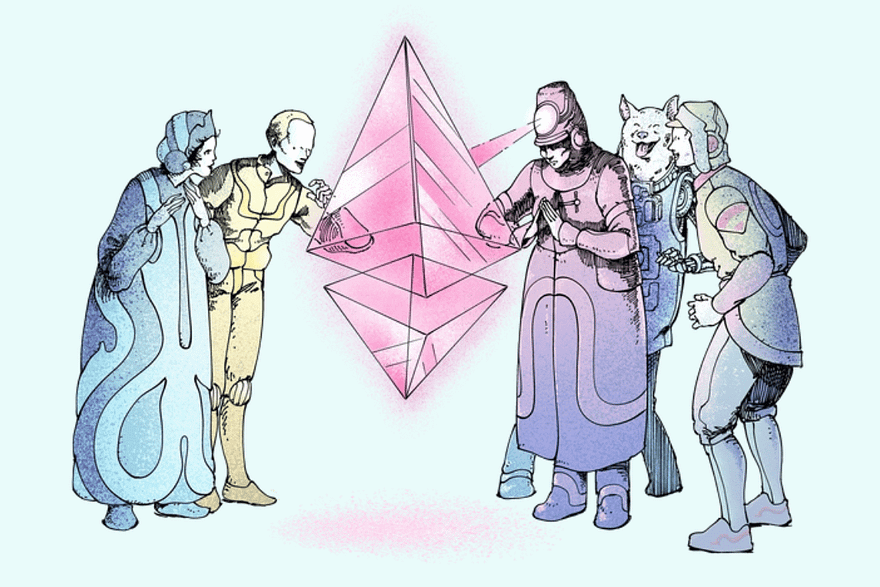The Carbon Footprint of Blockchain Technology
What did Ethereum Merge bring to the World?

In today’s world, the amount of carbon dioxide released into the atmosphere as a result of human activities such as heating, lighting, cooking, transportation, livestock farming, and industrial processes is increasing day by day.
The carbon dioxide equivalent of the greenhouse gases emitted into the atmosphere as a result of an individual’s, a country’s, or an organization’s activities is called a carbon footprint.
The term carbon footprint entered the literature in the 2010s after the studies of Plassmann and Edwards-Jones. Today, new areas of discussion have opened up regarding carbon footprint with blockchain and cryptocurrency technologies.
There have been criticisms about the large amount of energy consumed by mining activities, especially regarding blockchain technology. The Ethereum merge that took place in September 2022 promised to save energy costs, but did it really? Let’s examine it from the beginning of the subject, keeping in mind the ongoing discussions about carbon footprint.
Ethereum is a blockchain-based cryptocurrency that has gained significant popularity in recent years due to its smart contract capabilities, which allow developers to build decentralized applications (DApps) on top of the Ethereum network. However, like many other cryptocurrencies, Ethereum’s proof-of-work (PoW) consensus mechanism has been criticized for its high energy consumption and carbon footprint.
To address these concerns, the Ethereum community has been working on a major upgrade known as Ethereum 2.0 or the Ethereum Merge. This upgrade will replace the current PoW consensus mechanism with a more energy-efficient proof-of-stake (PoS) mechanism.
 Andrey Rudakov — Bloomberg/Getty Images
Andrey Rudakov — Bloomberg/Getty Images
PoW and PoS Consensus
The Ethereum merge involves two major upgrades: Beacon Chain and Shard Chains. The Beacon Chain is the first phase of the Ethereum 2.0 upgrade and was launched in December 2020. It serves as the backbone of the Ethereum network and introduces the PoS consensus mechanism. The Shard Chains, on the other hand, are expected to be launched in the future and will enable the network to scale by dividing transactions across multiple chains.
The PoS consensus mechanism used in the Beacon Chain is expected to reduce Ethereum’s energy consumption and carbon footprint significantly. Unlike the PoW consensus mechanism, which requires miners to solve complex mathematical problems to validate transactions, the PoS mechanism uses a different approach. In the PoS mechanism, validators are selected based on the amount of Ethereum they hold, and they are responsible for validating transactions and creating new blocks. This eliminates the need for expensive mining equipment and reduces the amount of energy required to maintain the network.
According to estimates, the Ethereum merge could reduce the network’s energy consumption by up to 99%. This could have a significant impact on the cryptocurrency’s carbon footprint, which has been a major concern for environmentalists and policymakers. However, it is important to note that the actual impact will depend on the number of validators and the amount of Ethereum staked on the network.
Scalability and Transaction Throughput
In addition to reducing Ethereum’s carbon footprint, the Ethereum merge is also expected to improve the network’s scalability and transaction throughput. This could make Ethereum a more attractive platform for developers and users alike and could lead to the development of more DApps and use cases.
The Challenges for Ethereum Merge
 Image Credit: Ethereum.org
Image Credit: Ethereum.org
While the Ethereum merge is a positive development for the cryptocurrency’s sustainability and scalability, it is not without its challenges. One of the main challenges is the need to ensure that the PoS mechanism is secure and resistant to attacks. This requires a significant amount of research and testing to ensure that the network is secure and can withstand potential attacks.
The other significant challenge is the need to ensure that the transition from PoW to PoS is smooth and does not disrupt the network’s operations. This requires coordination among the Ethereum community and careful planning to ensure that the transition is executed properly.
However, despite these challenges, the Ethereum merge is a significant step forward for the cryptocurrency’s sustainability and scalability. It demonstrates the Ethereum community’s commitment to addressing the environmental concerns associated with cryptocurrency mining and to creating a more efficient and sustainable blockchain ecosystem.
The Ethereum merge is a major upgrade for the Ethereum network that has the potential to significantly reduce the cryptocurrency’s energy consumption and carbon footprint. While there are challenges associated with the transition from PoW to PoS, the benefits of the upgrade are clear. The Ethereum merge is an important step forward for the cryptocurrency’s sustainability and scalability, and it will likely have a positive impact on the development of DApps and use cases on the Ethereum network.





Reviews